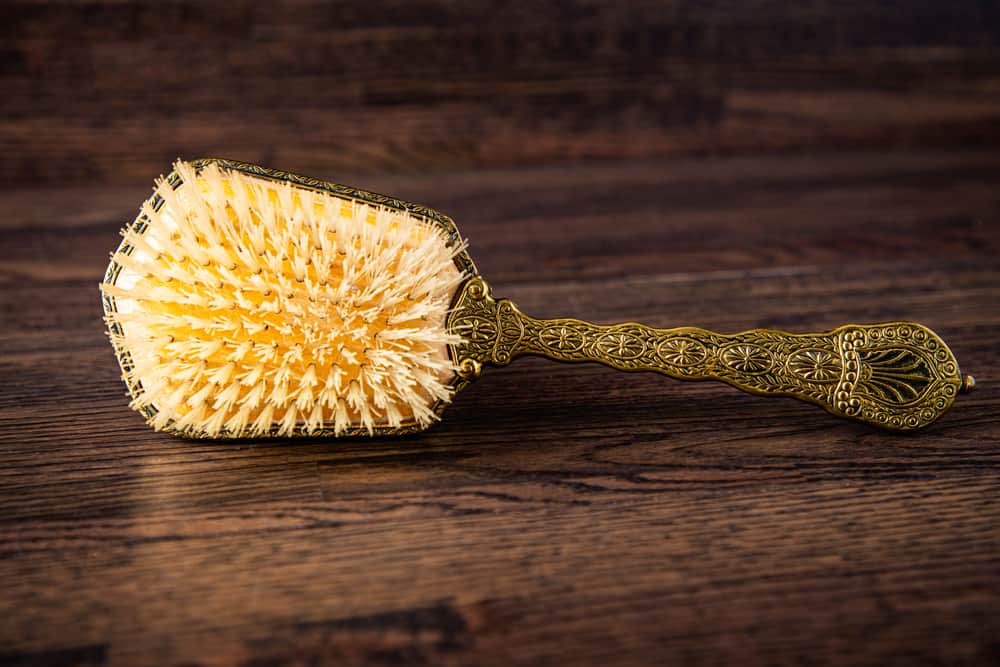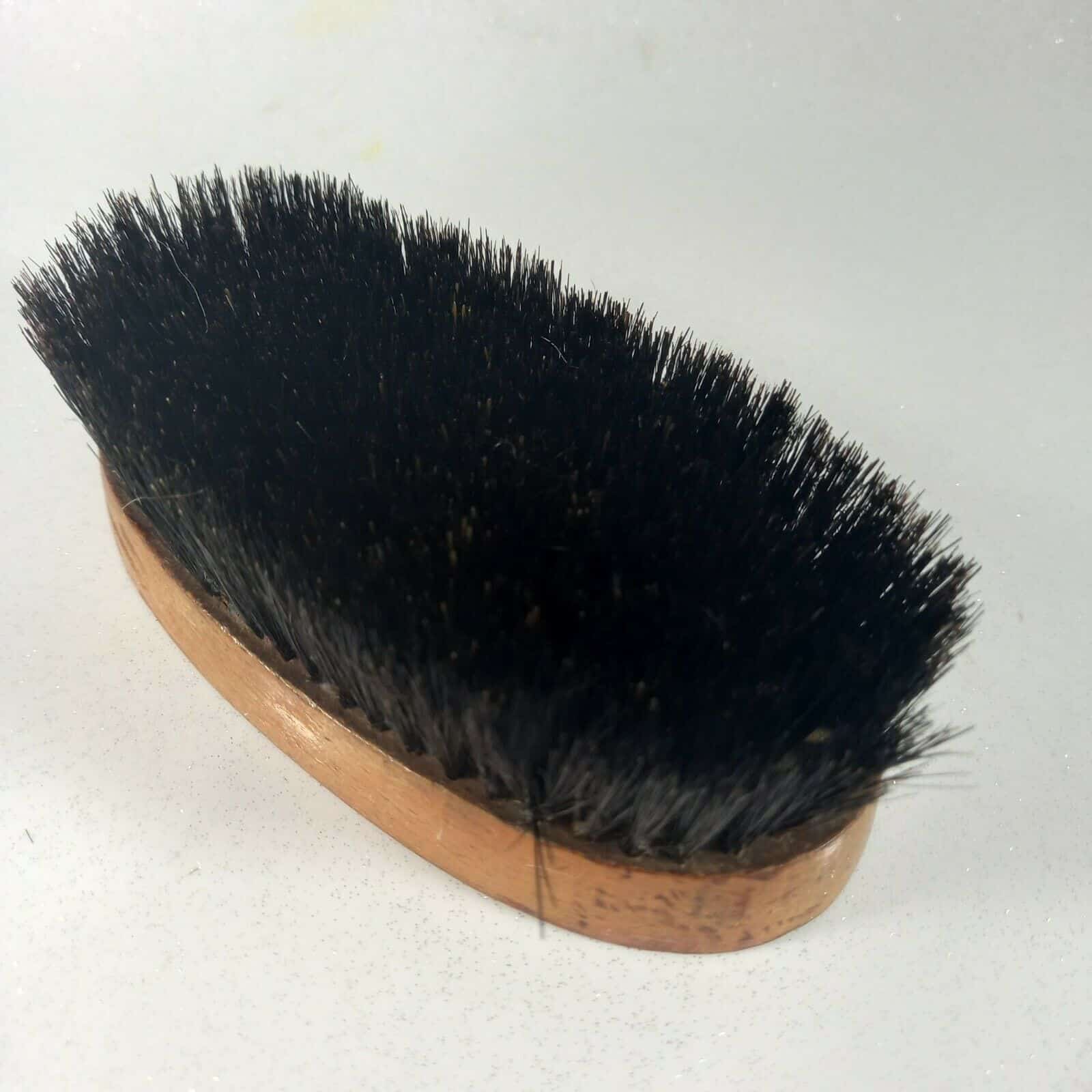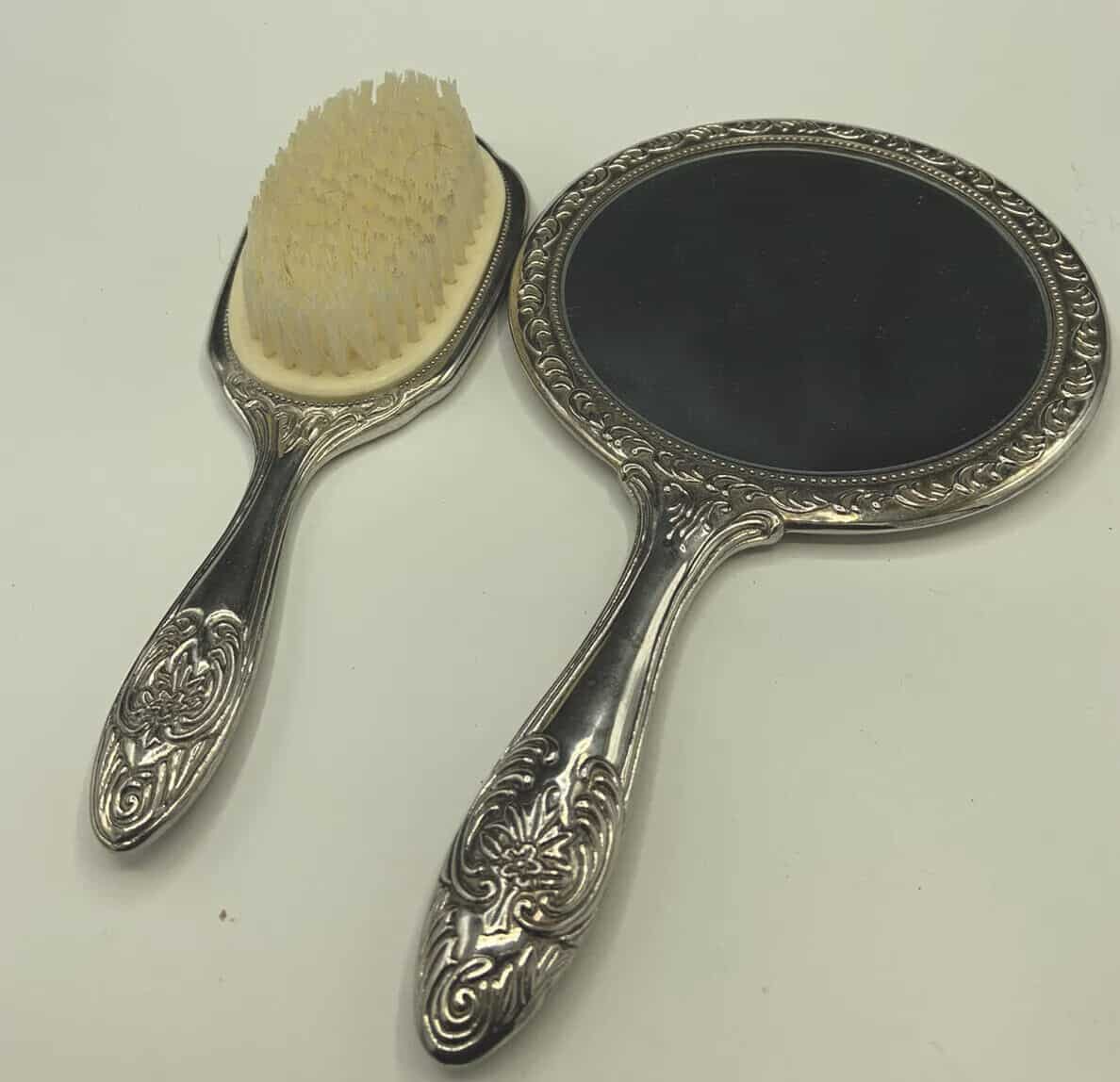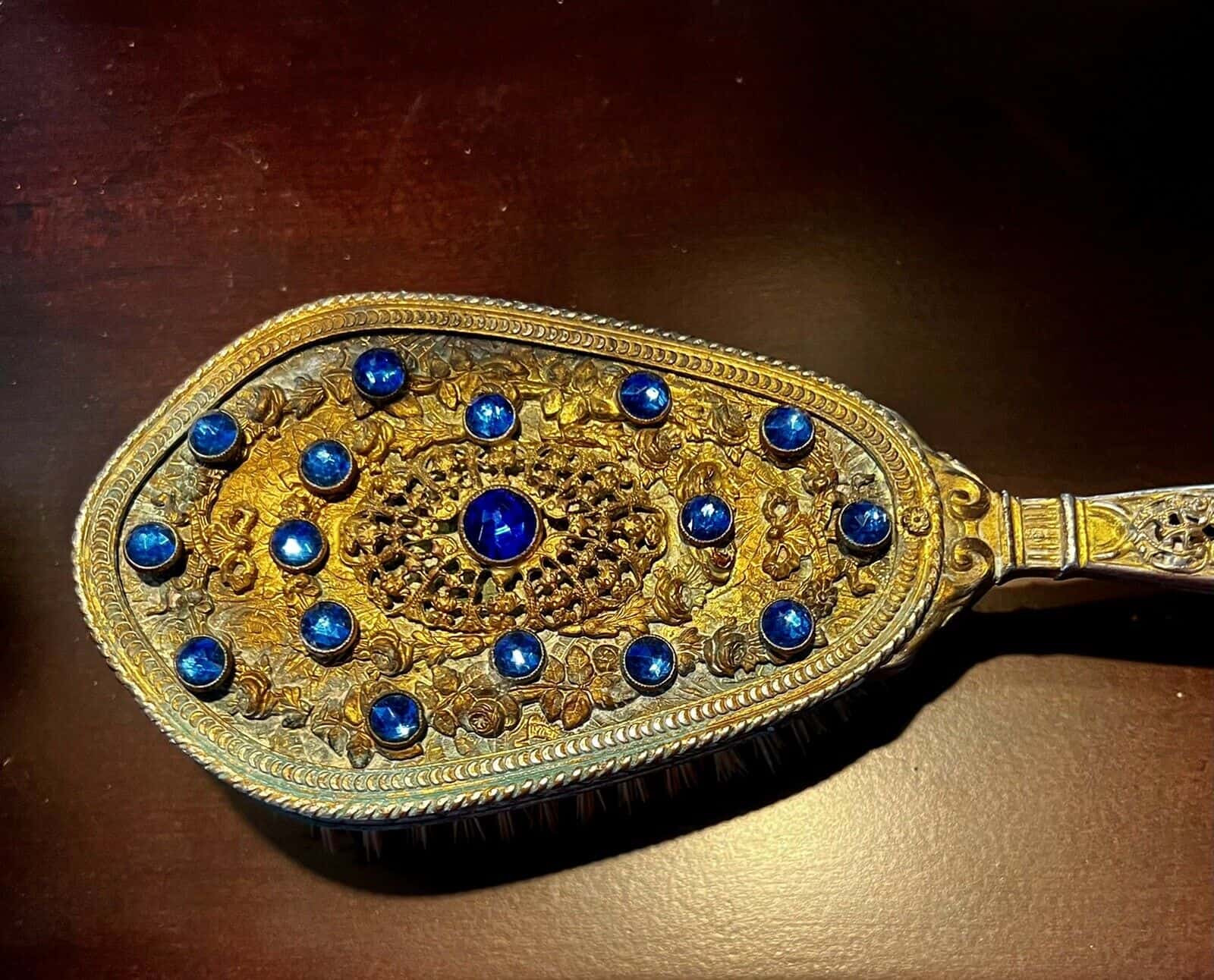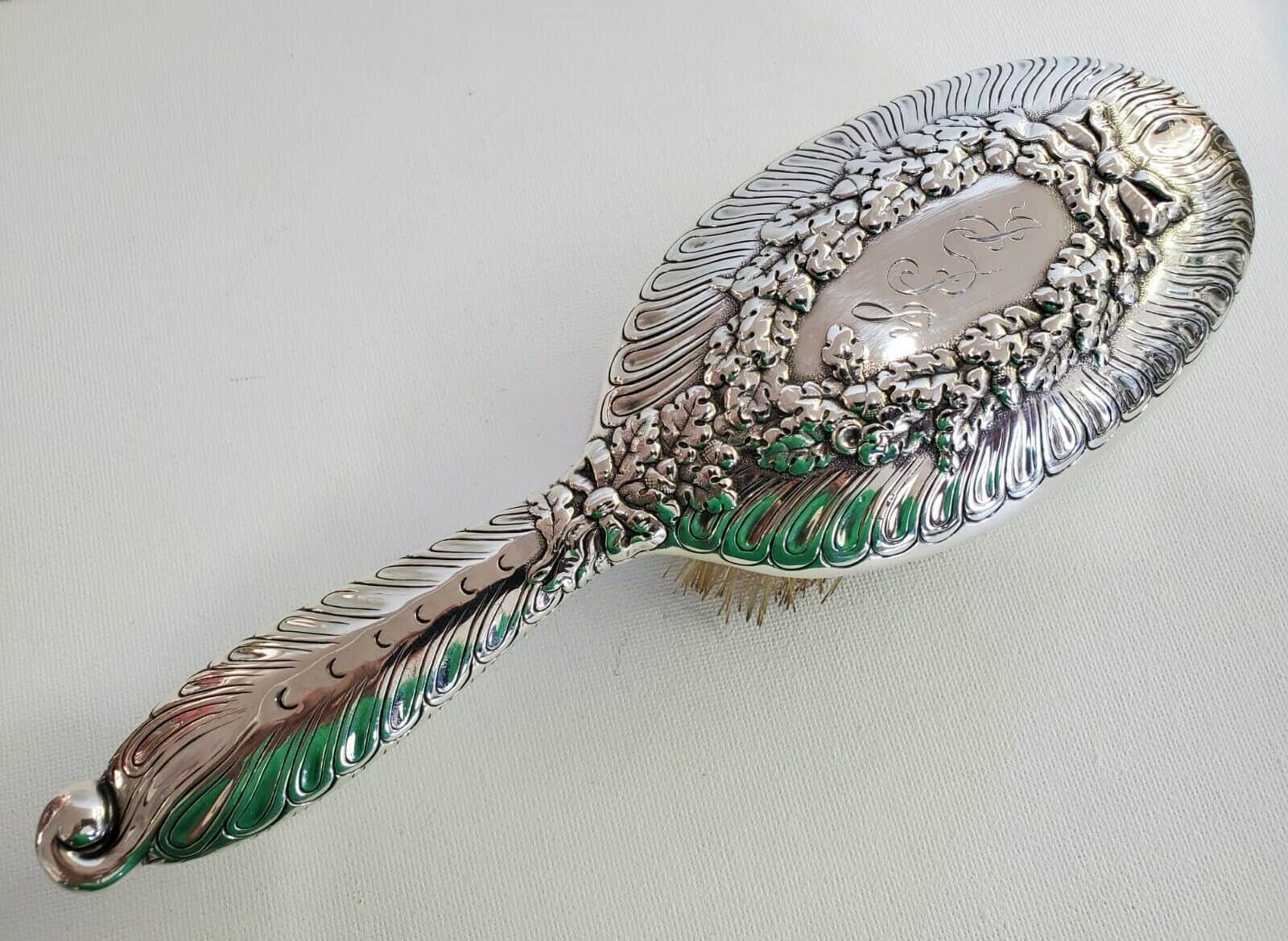Whether in fairytales or mythology, or priceless artifacts found throughout time, hair brushes are part and parcel of our lives.
But did you know that something so small and impactful, could also double as a valuable antique? With expert craftsmanship and textured bristles, they are simply beautiful.
Hair brushes appear in every part of the world, these priceless antiques come in all shapes, sizes, and designs.
But antique hair brushes are something extra special. Quite often, these hardy, durable, and well-crafted brushes are works of art.
Time to dust off your old brushes and look at them carefully. Who knows, you could be holding a priceless antique worth a small fortune?
Table of Contents
History of hairbrush
Variations of hairbrushes and combs have existed for centuries, whether in mythological stories or artifacts. wasn’t until 1777 that the official hairbrush we know of today formalized itself.
William Kent founded Kent Brushes in Hertfordshire, England, and used wooden handles and animal hair bristles. It took up to 12 craftsmen to make one hairbrush. These early hair brushes laid the foundations for what is a massive industry nowadays.
It wasn’t until the Industrial revolution some 100 years later that mass production became a reality. The brush-boring machine removed the tedious nature of bristle-making, and hairbrushes could be ‘churned out’ to meet the growing demands of the public.
In 1898, everything changed when Lyda Newman, an African-American inventor, filed a patent to use synthetic bristles and a ventilation chamber. This chamber made cleaning and repairing the brush much easier. This removed the need to source costly animal hair for brushes, speeding up production even more and reducing the brushes’ overall cost.
Nowadays, hairbrushes come in all shapes, sizes, and styles. But they still retain many of their design features first introduced by Kent, and then by Newman.
What were old hair brushes made of?
There are two main types of material used to make an antique brush; natural materials, and synthetic.
Natural materials
For bristles, both boar and horse hair brushes were popular choices. These fibers were incredibly tough, and rigid and kept their strength, even after continued use. Boar bristles are incredibly soft and could glide through long hair without damaging or tangling it – it usually was the most expensive bristle type.
For the brush handle, whalebone was a common material used.
- This vintage Rigby Battock whalebone hairbrush is worth $12
- This bone handle floral hair brush is worth $35
Synthetic materials
From the early 1900s onwards, synthetic materials grew in popularity. Rubber and plastic were both cheap to make and easy to mass-produce. Metal wire was also used to structure bristles and to provide support. Sometimes hairbrushes were played with more expensive coats to make them appear expensive but remain light.
Examples include:
- This silver-plated vanity set and brush are worth $36
Styles of antique hair brush
There are many different styles of hairbrushes. Here are a few of the most common ones:
- Round brush –this helped add volume to hair. It usually had a metal or ceramic base and could be used in the presence of heat.
- Vent brush –had increased airflow between the bristles, which helped brush through wet hair.
- Cushion brush –a rubber cushion added more flexibility and durability to the brush
- Detangler –widely spaced nylon bristles were effective at removing tangles.
- Animal hairbrush –tough bristles are still used today because of the increased tension, which helps smooth out hair faster with every stroke.
What can I use an old hairbrush for?
There are many creative ways to reuse an old hair brush.
Scrubbing brush
Because of their strong, textured bristles, old hair brushes make for excellent scrubbing brushes. They can remove even the toughest stains and dirt with a simple swing. Some antique hair brushes are even capable of scrubbing grease and grift from cookware, including dirty pots and pans.
Pet brushes
Whether you have a dog, a cat, or a horse, your old hair brush might be very effective in brushing off old, dead hair and helping style their hair.
Just be careful if you’re using them when your pet is wet and shampooed so that any harsh chemicals don’t affect the texture and condition of the bristles.
Decorations
Modern designers use old hairbrushes as ornaments in their own right and put them on display in cabinets or cases. It’s amazing what a lick of paint, a smidge of glitter, or gluing some gemstones on can do to an old hair brush.
Clothes brushes
Some people use cheap brushes to remove dust, lint, and other materials from their finery.
Arts and crafts
Speaking of art, many parents like to use old antique hair brushes in their art and craft projects with children. Again, think long and hard about using your brush this way, as most likely it will not recover from paint or bad handling.
Vintage hair brushes: Are they worth anything?
Now that we know antique hairbrushes have a huge variety and rich history, it’s time to get down to business. How much can they be worth?
While a lot of value depends on an individual collector’s taste level, here are some factors that will impact your brush’s value at auction.
Condition
The first thing that matters with any antique is its condition. Simply put – if it’s in good condition, it will be more valuable with collectors.
Hair brushes should have all their bristles intact. Bristles should have good structure and retain their shape. The brush’s handle should also be well cared for, with no scratches, dents, cracks, or discoloration.
Examples include:
- This antique silver hairbrush with engravings is marked in ‘excellent condition and is worth $115
- This beautiful Topaz jeweled hairbrush has ‘significant gilt loss’ throughout, and as such has a lowered price of $59
Material used
Certain brushes are worth more than others because of the high-quality materials used to produce them.
As a rule of thumb, plastics and other synthetic hair brushes aren’t typically worth more, because they were created at a time of mass production, and most likely many copies exist on the market. Cheap materials range from:
- This silver-plated ivory brush with plastic bristles is worth $11
There are antique hairbrushes made of high-quality materials like sterling silver. These brushes were often made for upper-class women who could afford heavier, more decorated brushes.
Some luxury brands like Tiffany also made several lines of brushes for high-society women:
- This Sterling silver hand mirror and hairbrush set is worth $89
- This Sterling silver hair brush is worth $125
- This 19thcentury Tiffany and Co. Repousse sterling silver hairbrush is worth $150
Antique Vs. Vintage
Antiques are items that are older than 100. Vintage, on the other hand, is older than 20 but younger than 100.
When it comes to hairbrushes, the closer you get to the 1700s, the more valuable it becomes in the eyes of collectors. However, one of the only ways to date your hairbrush correctly is if it has a distinguishable maker’s mark or logo. Without it, it can be hard to prove its authenticity.
But brushes that do have maker marks, and are proven antiques, can go for incredible amounts, depending on the brand:
- This DuPont-marked antique hairbrush is worth $12
- This 1881 Tiffany and Co. brush with the company logo is worth $299
Unsure if your brush is antique or vintage? Don’t worry. Many brushes which qualify as vintage can still be worth money. Examples include:
- This silver-plated vintage 3-piece brush set is worth $40
- This silver-plated vintage 2-piece set is worth $50
Decoration & style
Owing to their market of women, it was very common for hairbrushes to sport unique designs, styles, and decorations to catch the eyes of potential customers.
Some brushes had carvings or designs embossed on them. Others incorporated gemstones and jewels, or shimmer effects to mirror expensive materials. Other brushes followed popular design trends of the times, including Art Deco and Art Nouveau.
Examples include:
- This sterling silver Art Nouveau brush top part is worth $42
- This Art Deco silver plated hair brush is worth $122
How do you clean an antique hairbrush?
Antique hair brushes can be delicate to modern chemicals, and if you want to preserve the bristles, and restore your piece to great condition, heed our warnings.
First, avoid using soap as this can degrade a bristle’s natural texture and rigid strength.
- Instead, we recommend using a mixture of soda, dissolved in warm water.
- Simply stand your brush in it for a short time, only submerging the bristles.
- After a period, remove the brush and most of the dirt will have been removed.
- Dry your brush in the open air with the bristles facing downwards.
If your antique hair brush has knotted hair around the bristles, consider using a pair of scissors to cut it away, or a rat tail comb to filter out strands.
